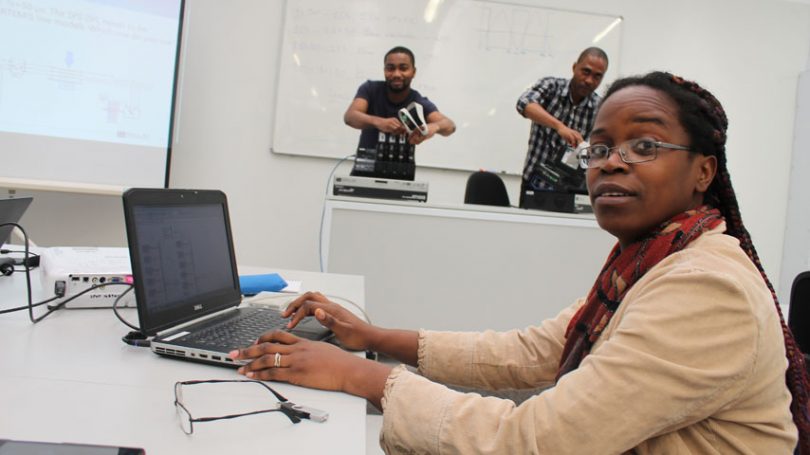It is a challenge to teach and conduct research with live electrical power systems.
To address issues of safety, inaccurate results and costly delays, the Centre for Distributed Power and Electronic Systems in the Department of Electrical, Electronic and Computer Engineering has developed a state of the art Real-Time Simulation Laboratory for Teaching and Academic Research.
Using NRF funding of R14million, the CDPES has purchased OPAL–RT equipment.
OPAL-RT is the world leader in the development of PC/FPGA-based Real-Time Digital Simulator, Hardware-In-the-Loop (HIL) testing equipment and Rapid Control Prototyping (RCP) systems to design, test and optimise control and protection systems used in, among others, power grids and the automotive industry as well as R&D centres and universities.
A week long equipment and systems training session was included as part of the purchase and OPAL-RT Power Systems Technical Manager François Tempez came out to Cape Town as instructor.
Tempez said while this particular system has been made available to four universities in Nigeria plus one each to universities in Dar Es Salaam and Reunion Island, this was the first time it had been purchased by a South African educational institution. (The Council for Scientific and Industrial Research is the only other institute in the country which uses this particular equipment.)
“Take-up across the world is about 60 percent to industry and 40 percent to universities. We want to be close to the universities though, for the R&D,” Tempez explained.
CDPES staff (Drs Atanda Raji, Khaled Aboalez and Marco Adonis) and postgraduate doctoral students (Sarah Guyemat Mbourou, Doudou Nanitamo Luta and Akim Aminou Moussavou) completed the training on-site.
CDPES deputy head of operations Dr Marco Adonis says it is tricky to test a system in real time, so the computer simulation allows for all sorts of scenarios to be run.
“It is specifically geared to the post-graduate students to develop new models,” said Adonis.
Unlike the CSIR, CPUT has six units which means six students can simultaneously run their own projects and experiments.
Work in the laboratory allows students to learn how to develop realistic models for micro-grids, power electronic circuits and electronic drives; test various system fault conditions; and develop and improve control schemes for power converters and drives.
They could even test and evaluate simulated controllers when connected to a real plant.
In addition to the students learning new skills, the laboratory is also available to assist private sector developers with new and innovative system design, testing and verification.
Written by Theresa Smith







